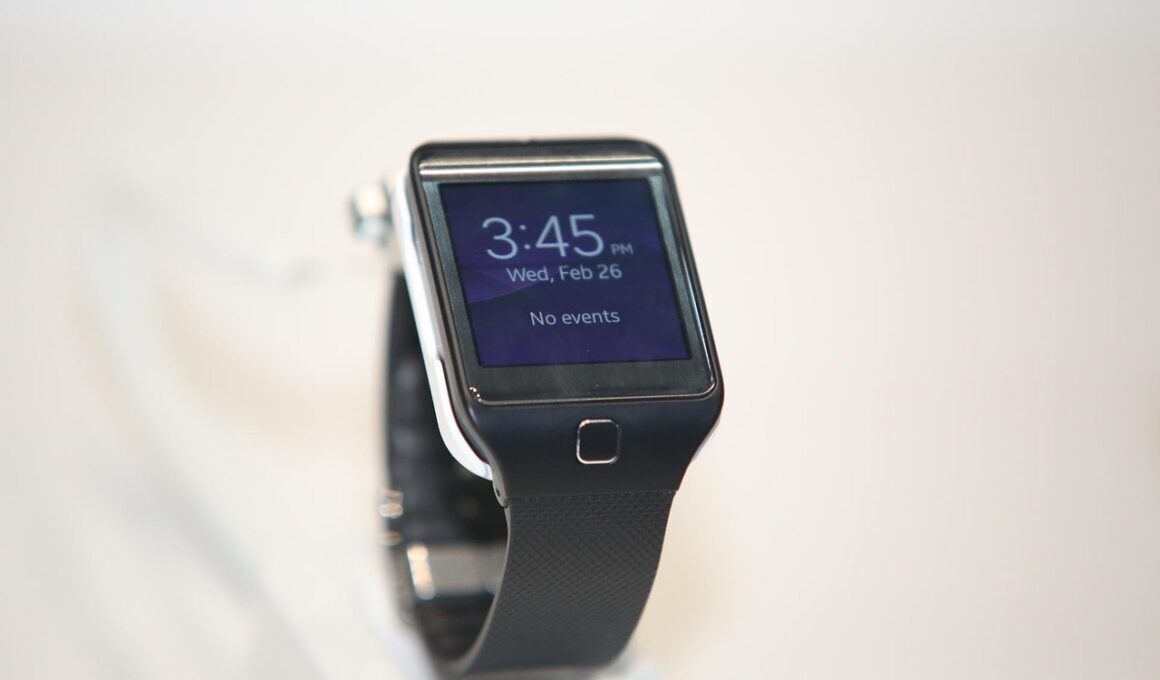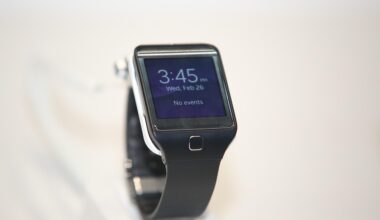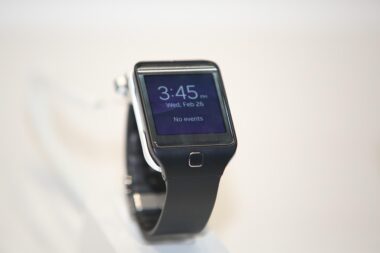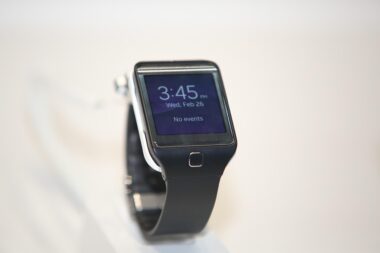Using Wearable Technology in Fitness Challenges
Wearable technology has revolutionized how participants engage with fitness challenges, providing real-time feedback through various devices. With options from smartwatches to fitness bands, users can track their workouts, calories burned, and heart rate efficiently. These devices often synchronize data with apps, enhancing individuals’ motivation and accountability. Participants can now monitor their progress meticulously, making necessary adjustments to their routines directly. Such capabilities empower fitness enthusiasts to set personal goals effectively, whether training for a marathon or enhancing overall wellness. Most wearables are equipped with maps and GPS, allowing individuals to explore new running routes while feeling safe. This capability encourages users to stray from the confines of their treadmills and experience nature. Moreover, wearables can connect with social networks, enabling users to create communities around common fitness challenges. Competitors can share achievements, inspiring one another to work harder. In the context of competitions, certain devices allow for real-time activity sharing, promoting friendly rivalry among participants. Wearable technology, therefore, not only informs users of their fitness statistics but also fosters social interactions that can keep them engaged throughout their fitness journey.
In today’s fitness landscape, integration of wearable technology in challenges plays a pivotal role. These devices facilitate robust tracking features, ensuring that challengers adhere to their fitness schedules. From tracking sleep patterns to monitoring heart rates during workouts, wearables provide comprehensive insights that enhance performance. Users can analyze their activities and adjust based on the feedback received. Moreover, many wearables offer customizable alerts to remind users about upcoming challenges or milestones. This aspect is particularly beneficial for maintaining motivation over longer periods, helping individuals avoid burnout. Alerts serve as gentle nudges to instill discipline in adhering to workout schedules. Furthermore, trends in wearable technology indicate a rise in community-focused features. Participants can connect through apps associated with their devices, sharing in their successes and setbacks. This connectivity builds camaraderie within the fitness community and encourages accountability. Virtual challenges such as step competitions foster a sense of unity among users. By inviting friends to join fitness challenges, participants can experience shared journeys towards health. Ultimately, wearable technology transforms fitness challenges into comprehensive experiences, allowing individuals to achieve their goals collectively while enjoying the social facets of fitness.
The Benefits of Tracking Progress
The advantages of utilizing wearables within fitness challenges are numerous, particularly in tracking progress. Participants can monitor specific metrics, including steps taken, distance covered, and calories burned, providing insights that words alone cannot convey. Precision in tracking assists individuals in assessing their performance and identifying areas needing improvement. Many wearables also provide detailed analytics over time, allowing users to view their development in graphs and statistics. This historical data serves as motivation to push further, showing tangible results from hard work. As users become more aware of their milestones, confidence builds. This gradual increase can significantly impact their overall performance, encouraging them to attempt new challenges. Additionally, some devices incorporate goal-setting features, enabling users to define achievable objectives based on their initial assessments. Upon reaching those goals, individuals experience an enhanced sense of accomplishment that further fuels their desire to continue. Moreover, wearable technology often encourages healthy competition between friends through features that enable challenges amongst them. This camaraderie can add a playful element to workouts, keeping participants engaged and motivated throughout their fitness journeys.
Wearable devices also play an essential role in enhancing safety during fitness challenges. Many models offer features such as heart rate monitoring, helping users stay within safe physical limits while exercising. Participants can receive alerts if their heart rate exceeds defined thresholds, mitigating the risk of overexertion. This critical feedback is vital for individuals just starting their fitness journey or those with pre-existing health conditions. Additionally, certain wearables can track workout intensity, helping users adjust their routines accordingly. As individuals challenge themselves, awareness of their physical capabilities is crucial. The safety feature is just one example of how wearables contribute to a more enjoyable fitness experience. Furthermore, many wearables come with built-in GPS functionality, allowing users to explore outdoor exercises confidently. With this feature, participants can keep track of their routes and be informed about distance traveled. In case of emergencies, wearables can even enable users to send out alerts quickly. Overall, the integration of safety features underscores the importance of wearables, providing participants not just with support throughout challenges but also reinforcing their sense of security.
Creating a Competitive Edge
Innovative companies have designed wearables equipped with various game-like features that can create a competitive edge in fitness challenges. Such technology introduces an element of fun by gamifying workouts, where participants earn badges and compete for rankings based on their performance. These features enhance engagement levels as individuals prepare to push themselves harder than ever before. Notably, the incorporation of leaderboards provides an additional incentive to outpace friends or teammates. Friendly competition can ignite new levels of motivation, encouraging users to achieve more than they ever thought possible. Many fitness apps linked to wearables display these leaderboards in real-time, creating excitement about daily rankings. Tracking progress in relation to others adds a layer of social interaction that can reduce feelings of isolation during workouts. Moreover, numerous fitness challenges include virtual races, where participants can track their movements on multitasking platforms globally. These online competitions allow individuals from diverse geographical locations to compete collectively. As a result, wearables enable participants to feel connected through these challenges, sharing experiences and striving for personal excellence together in the process.
Integration with mobile apps is another noteworthy aspect of wearable technology in fitness challenges. Users can sync their devices with various apps that not only track their activities but also provide tailored training programs. Many programs are adjusted based on real-time data, allowing individuals to receive actionable feedback that improves workout efficiency. This adaptability is essential as it introduces variety into routines and combats boredom. All users must do is connect their wearable technology to their app, allowing seamless data-sharing for a better understanding of their fitness journey. Additionally, many apps offer community forums where users can discuss challenges, share tips, and motivate each other. The collaborative aspect helps create relationships among fitness enthusiasts, fostering a sense of belonging within a broader community. This connectedness encourages participants to remain committed to breakthrough goals they may have set. The relationship between wearables and connected applications creates a robust ecosystem that enriches participants’ experiences and accomplishments. In summary, the synergy between wearable devices and mobile applications enhances fitness challenges, inspiring users to achieve their desired health objectives.
Conclusion: A Tech-Driven Future in Fitness
As technology advances, so does the potential for innovation within fitness challenges through wearable devices. They provide extensive data and insights, allowing participants to reflect on their progress and adapt their routines accordingly. By monitoring metrics closely, users develop new skills and better understanding of their bodies, enhancing overall fitness levels. Moreover, the integration of gamification encourages healthy competition, contributing to the excitement of fitness challenges. With social features available through mobile applications, users are more connected than before. They share advice and remain accountable to one another through shared experiences. This technological integration significantly increases the likelihood of individuals maintaining their fitness journeys long-term. Furthermore, the focus on safety and real-time feedback fosters an environment where challengers can grow and succeed confidently. Fostering a community centered around fitness raises the profile of wellness and encourages overall healthier lifestyles. As wearables continue to evolve, fitness challenges will undoubtedly become more dynamic. This advancement will attract newcomers while engaging seasoned enthusiasts. By embracing technology, participants can redefine their fitness limits, paving the way for healthier life outcomes and enhanced physical well-being in the future.
In summary, the impact of wearable technology on fitness challenges is incredibly significant. Users gain valuable insights about their habits and performance, enabling them to adjust accordingly and push boundaries. The overall experience becomes more enriching and fulfilling. As fitness enthusiasts increasingly adopt these technologies, the discussions around health and fitness will become more empowered. This progression leads to innovative platforms and features set to emerge in the coming years, enhancing the fitness landscape. In this way, we embrace the transformative nature of technology and its positive impacts on our lives.
Wearable devices have a lasting impact on how we view and approach fitness challenges. Those who integrate this technology into their routines are likely to experience increased productivity, motivation, and sense of community. As people engage with fitness challenges, they naturally encourage others to adopt healthier lifestyles. This aspect extends beyond the individual level, ultimately promoting a shift towards a fitter society. A tech-driven approach fosters connections around shared goals, guiding everyone toward improved health. The future of fitness challenges is bright, especially as wearable tech continues to evolve and offer innovative insights. Enduring benefits come from embracing technology, encouraging individuals to remain dedicated to achieving their fitness aspirations over time.





